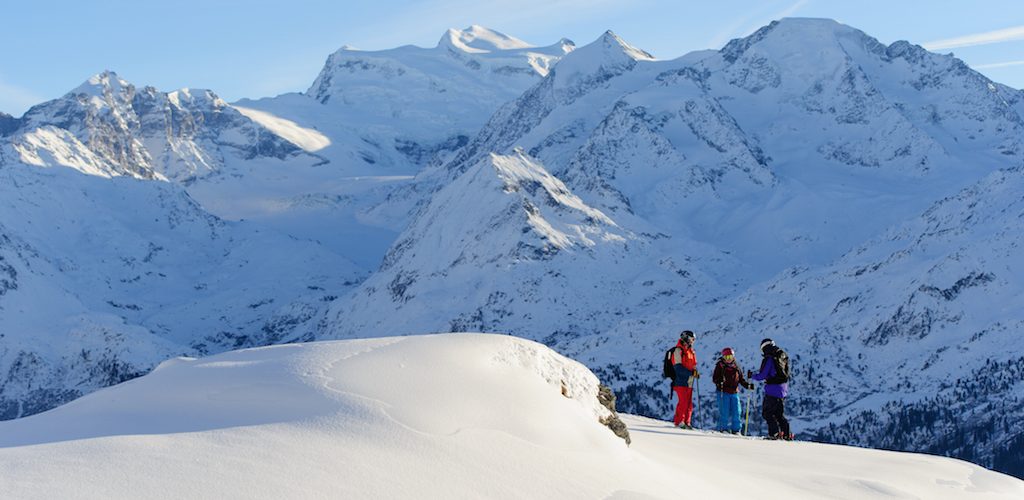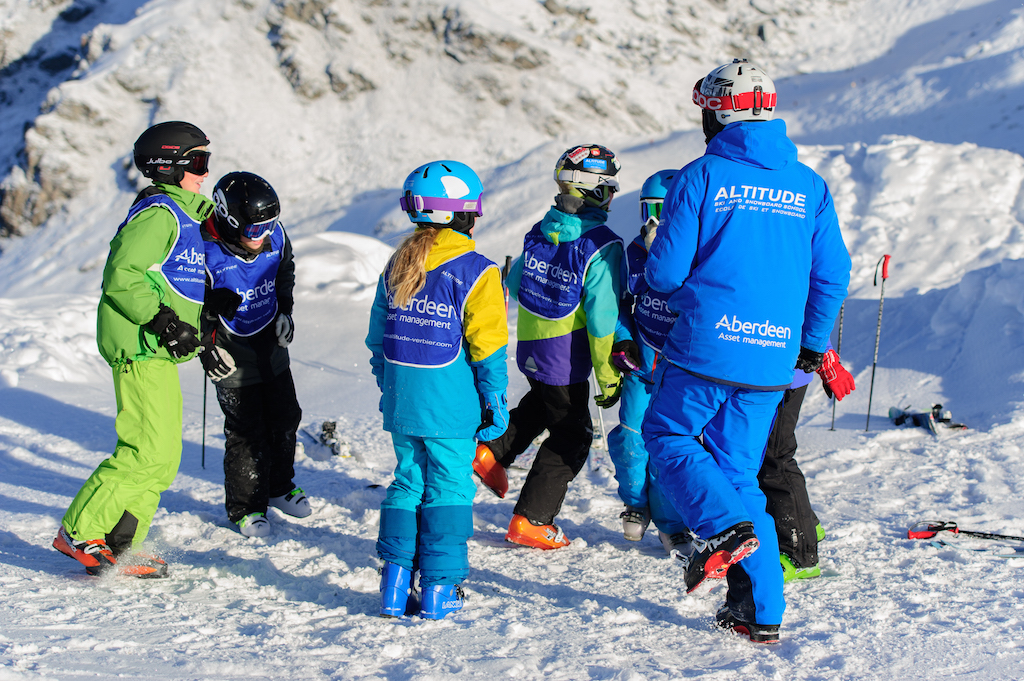The ability to snowboard or ski off-piste is something that many people hope to be able to master at some point during their skiing or snowboarding holidays.
Thanks to the latest safety equipment and big fat skis and boards, inexperienced skiers and boarders are now able to experience the wonders of off-piste powder snow much earlier than in previous years. One downside of such advances in technology is that more people who ski off-piste are becoming exposed to potentially dangerous avalanche-prone slopes. We decided to focus this month’s article on both technique and safety for off-piste skiing and boarding.
Learn to stay safe
While practising your new off-piste technique, it’s important to have some basic avalanche awareness and rescue skills. This is important even if you are having a lesson or skiing with a guide as even the experts can get caught out at times.
The bare minimum when intending to ski off-piste, whether with an instructor/guide or alone, is to have an avalanche transceiver, probe and shovel and to know how to use them. You need to be very confident using this equipment, and the only way to achieve this is to have some training and then to practise.
If with a group of friends (which we advise as you should never be off-piste alone), you need to be confident that your friends also know how to use the equipment and are able save you in the case of an avalanche.
TIP: To prepare and refresh your knowledge, you can practise using your transceivers ahead of the holiday by hiding them around the house or in the garden. Just be careful of metal objects as these interfere with the signals.
Ski/Snowboard Safely
Where to practise?
- When choosing a slope to practise your newly learnt off-piste technique, pick a slope which is gentle and has no natural terrain traps such as gullies. It is also good to avoid areas with cliffs or large rocks.
- Ideally choose a slope where there are no skiers looking to drop in high above you – thus reducing the chances of someone else setting off an avalanche from above and down onto you.
- Plan where you wish to ski/ride and seek advice from an expert on the potential risks of taking this slope.
- Always check the weather forecast – there are local avalanche bulletins available in all resorts; these will tell you about the riskier slopes and the general level of avalanche risk.
- Always descend the slope one at a time to avoid multi burials if caught in an avalanche, and stop to the side, away from the fall line of the route you just came down.
TIP: Only ski/ride on steep slopes between 30° to 45° when there are safe avalanche conditions.
Energy and Injury
Should I sit back in the “pow” ?
It is a common misconception that in powder snow you should sit back to get your skis out of the snow. There are times when we may need to sit back (such as when we’re straight running along a flat area in heavy powder), but in general don’t do it; it’s much better to be in a centred position, on top of your skis/board and in control.
If you do sit back, it puts you in a tiring position, and from here it is difficult to control and turn the skis/board. The same basic principles of skiing and boarding apply whether you are on a groomed run or in fresh snow. Remember what you have learnt on the piste, and take this with you to the new fresh snow.
How do I avoid the “face plant”? One common mistake is over-turning across the fall line. To avoid this, try to make nice “c” shaped turns, allowing one turn to flow nicely into the next. Powder snow can be quite slow, and speed in this case can be your friend as it will help you to float to the surface between turns, which makes turning easier.
TIP: Start by going straight down the fall line and turn a little bit less than usual – speed is your friend.
Flow
Once you have chosen a safe slope with low avalanche risk, you can then start to practise things that you have learnt in your lesson. You may find that off-piste conditions highlight some of the weaknesses in technique that you may also have on the piste. If you are really struggling to ski off-piste, it may be that you need to practise your technique a little more on the piste ☺. There is no shame in going back to the piste to practise a little more!
One element that is crucial for going off-piste is to have good timing and coordination. Focusing on your pole plant is one thing that can help you to maintain good rhythm, and at the same time it can also help you to commit to the new turn. Or pick a good song in your head ☺.
TIP: Try to count 1, 2, 3, pole plant and turn … 1, 2, 3, pole plant and turn …
Safety First With Kids
If your child has already skied for quite a few weeks and is looking for a new challenge, then racing can provide a great environment to develop their skiing technique while also having a clear focus on going fast (which kids love) but in a controlled environment.
Some possibilities include:
Resort Races– Most resorts run kids’ races every weekend – they can be great fun and challenging …
Ski School Holiday Clubs – These are usually group lessons which run during the holiday periods for advanced children.
Artificial Snow Domes – Before or after your holiday, why not try to join some of the local ski clubs? Usually either focused on racing or freestyle.
Altitude in Verbier run a race camp during holiday week. They also run a club every weekend of the season for local children. A typical day would include some fun warm-ups and technical training focused on carving. Then half the day would be focused on racing, making sure the course difficulty is set to the right level. Then a cool-down and some off-snow work looking at tactics and racing line or doing some basic physical training.
Skiing in a race course and flying past gates can be a daunting experience. While it’s great to push the children to experience new things, we want to make sure that the experience is always positive and enjoyable. A professional coach will always do this, and who knows, perhaps your child could be the next Hermann Maier or Lindsey Vonn?
The Altitude winter company portfolio includes the ski and snowboard school, the Futures instructor training programmes and FREERIDE VERBIER, a new school dedicated to off-piste coaching in Verbier.
For more information:
0041 27 771 6006
To follow the Altitude Verbier team:
https://www.facebook.com/altitudeverbier/
https://www.instagram.com/altitudeverbier/
https://twitter.com/AltitudeVerbier





